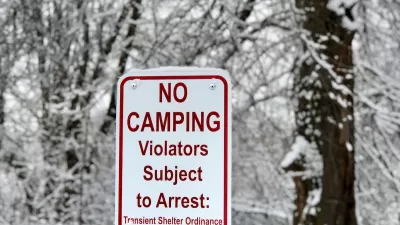Houston's homeless response program has yielded strong results in the last few years. Just 1,900 new affordable housing units could 'effectively end' homelessness in the city.

In an article published by the Kinder Institute for Urban Research, Mike Nichols, president and CEO of the Coalition for the Homeless of Houston/Harris County, outlines the success the city has had in reducing homelessness and the steps necessary to "effectively end" it. According to Nichols, the three-county homeless response system known as "The Way Home" has placed more than 24,000 people into housing since 2012. Of people housed in the last two years, more than 90 percent have maintained stable housing.
Nichols attributes the success of the program to several factors, including:
collaborative leadership and buy-in among local elected officials and local direct service provider agencies; a strong reliance on good data to drive decision-making; and an emphasis on prioritizing the most vulnerable for access to those programs first. We follow Housing First, a nationally recognized best practice that involves providing housing to people with no preconditions (e.g., sobriety) and then offering voluntary supportive services to help them maintain their housing.
Nichols points to strong investment in permanent, supportive housing as a key driver of Houston's success, but asserts that "we urgently need more one-bedroom, all-bills-paid apartment units to continue to house our clients." The Coalition estimates that the city needs 1,900 new affordable housing units to provide housing for all who need it.
Nichols concludes by highlighting the need for "available, safe, and affordable market-rate apartments" as a crucial tool for agencies working to help people who are unhoused.
FULL STORY: How close is Houston to ending homelessness? Closer than you think.

Alabama: Trump Terminates Settlements for Black Communities Harmed By Raw Sewage
Trump deemed the landmark civil rights agreement “illegal DEI and environmental justice policy.”

Planetizen Federal Action Tracker
A weekly monitor of how Trump’s orders and actions are impacting planners and planning in America.

The 120 Year Old Tiny Home Villages That Sheltered San Francisco’s Earthquake Refugees
More than a century ago, San Francisco mobilized to house thousands of residents displaced by the 1906 earthquake. Could their strategy offer a model for the present?

In Both Crashes and Crime, Public Transportation is Far Safer than Driving
Contrary to popular assumptions, public transportation has far lower crash and crime rates than automobile travel. For safer communities, improve and encourage transit travel.

Report: Zoning Reforms Should Complement Nashville’s Ambitious Transit Plan
Without reform, restrictive zoning codes will limit the impact of the city’s planned transit expansion and could exclude some of the residents who depend on transit the most.

Judge Orders Release of Frozen IRA, IIJA Funding
The decision is a victory for environmental groups who charged that freezing funds for critical infrastructure and disaster response programs caused “real and irreparable harm” to communities.
Urban Design for Planners 1: Software Tools
This six-course series explores essential urban design concepts using open source software and equips planners with the tools they need to participate fully in the urban design process.
Planning for Universal Design
Learn the tools for implementing Universal Design in planning regulations.
Clanton & Associates, Inc.
Jessamine County Fiscal Court
Institute for Housing and Urban Development Studies (IHS)
City of Grandview
Harvard GSD Executive Education
Toledo-Lucas County Plan Commissions
Salt Lake City
NYU Wagner Graduate School of Public Service





























